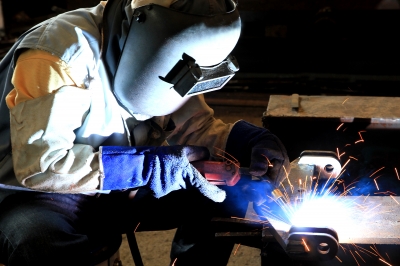 The Philippine manufacturing sector continued to cool in June 2015 due to the sustained decrease in global demand and business interruptions during the rainy season, according to the National Economic and Development Authority (NEDA).
The Philippine manufacturing sector continued to cool in June 2015 due to the sustained decrease in global demand and business interruptions during the rainy season, according to the National Economic and Development Authority (NEDA).
Data from the Philippine Statistics Authority’s Monthly Integrated Survey of Selected Industries for June 2015 showed that the manufacturing sector’s Volume of Production Index (VoPI) contracted further by 3.6% from a 2% drop in May, a complete opposite from last year’s double-digit growth of 12.7% for the same month.
Moreover, the Value of Production Index (VaPI) declined 7.3% year-on-year for this period.
However, Economic Planning Secretary Arsenio Balisacan said business expectations across sectors remain optimistic.
“Household consumption is also expected to be strong, driven by sustained inflow of remittances and election-related spending. These will then boost domestic demand and support growth in the manufacturing sector,” Balisacan said.
Moreover, he said there is a sustained positive outlook for the construction-related sectors backed by brisk construction activities.
“This is fueled by the growth of tourism, continued implementation of infrastructure-related government projects, and robust information technology and business process outsourcing,” Balisacan, who also sits as NEDA director general, said.
“This will result in additional demand for offices and other facilities, housing spaces, roads and bridges. Furthermore, low inflation environment and continuous decline in oil prices are expected to keep construction costs at minimal level,” Balisacan added.
For consumer goods, the volume and value of net sales in furniture and fixtures grew 61.4% and 37.6%, respectively, in June 2015. Similarly, the year-on-year growth for tobacco volume and value of net sales continued to climb at 10.9% and 11.9%, respectively.
However, the food subsector continued its double-digit year-on-year drop of 12.5% and 12.7% in volume and value of production, respectively, as it suffered from the effects of declining world milk prices as well as reduced imports from China and a ban on Russia.
As for intermediate goods, production and net sales of non-metallic mineral products demonstrated a double-digit year-on-year growth of 28.5% and 24.5% in volume and 18.7% and 14.9% in June 2015, respectively. The growth in this subsector was owing to the increasing demand from infrastructure-related government projects and the growing tourism, information technology, and business process outsourcing industries, NEDA said.
For capital goods, the collective double-digit year-on-year growth in value and volume for fabricated materials (21.4% and 17.4%), machinery (11.2% and 10.4%) and transport equipment (12.1 and 10.3) cancelled out the steep decline in net sales of basic metals.
“We must pursue consistent and responsive policy initiatives for MSMEs (micro, small and medium-sized enterprises) to increase their participation in the global value chains and manufacturing activities,” Balisacan said.
He added that the country should invest in cost-effective and climate-smart technology to reduce the vulnerability of locally produced products to seasonal changes in weather conditions.
“The passage of the Philippine Competition Act and the Foreign Ships Co-Loading Act should be supported by the delivery of necessary infrastructure projects to address the bottlenecks in the logistics and transport systems. Business procedures must be streamlined to encourage new entrants, while existing firms need to be encouraged to diversify into new product lines and market,” he suggested.
Image courtesy of koko-tewan at FreeDigitalPhotos.net





